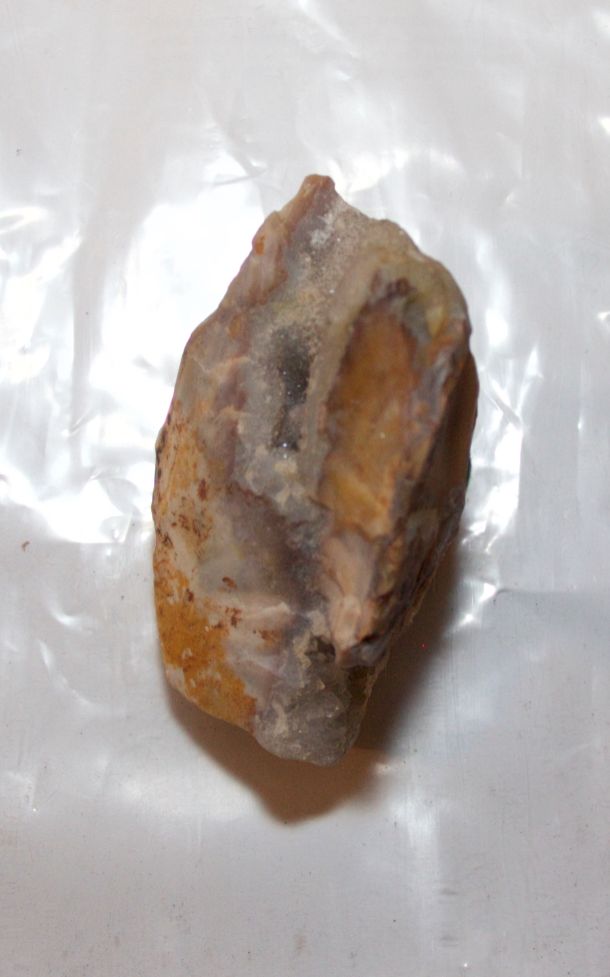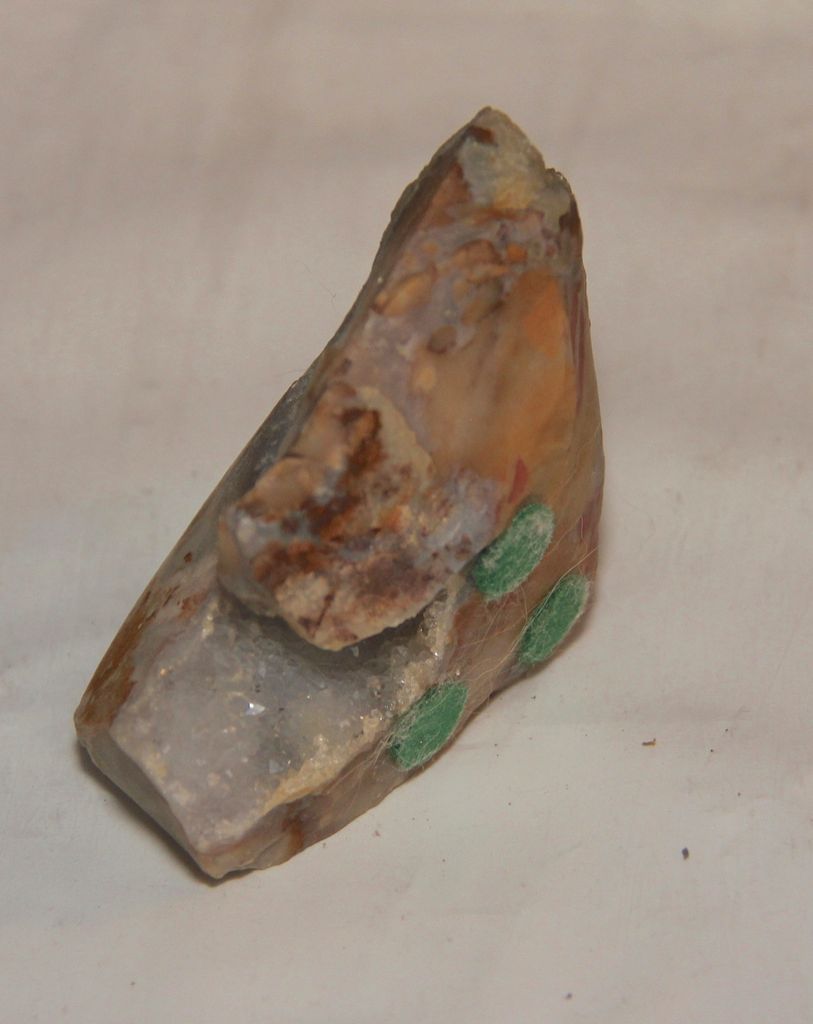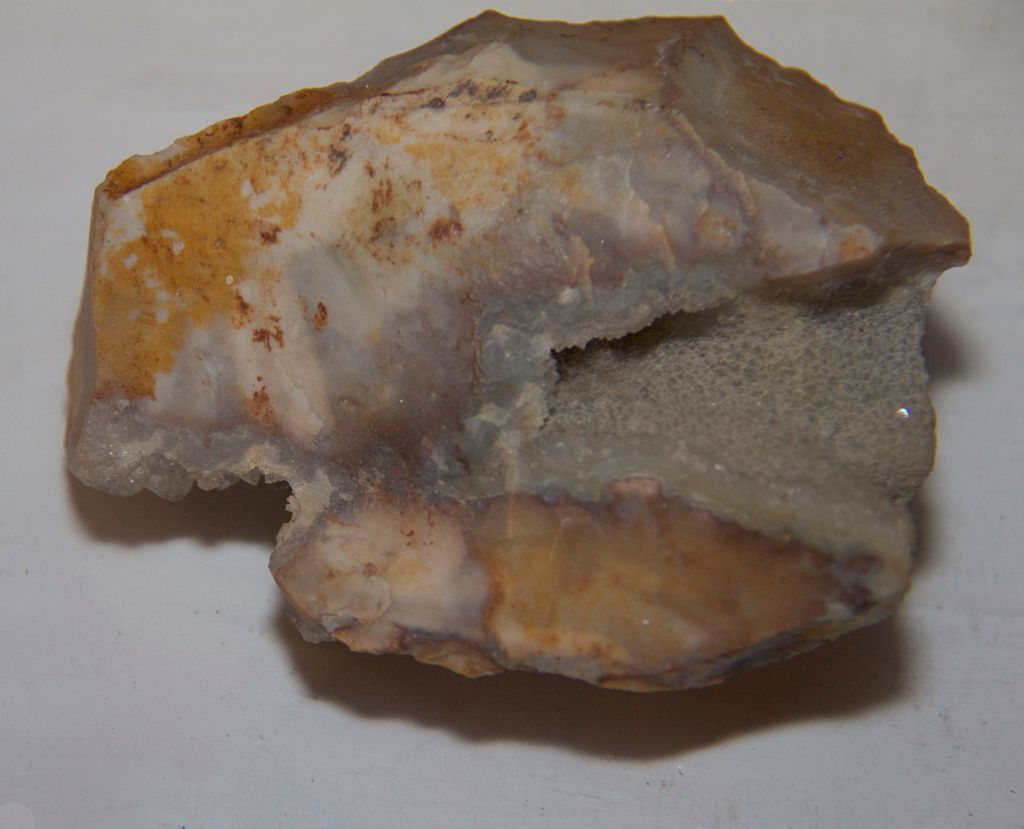lock is the problem. buy a replacement lock from TOTW.Hi, hopefully someone can tell me what’s is going on,I keep shattering flints.I gap them 1/32 to 1/16 at half cock hammer, they are strait. I am using the T/C flints until get to Dixons for better ones but still they should not be shattering sometimes on the first shot.Im sure its me doing something wrong do to I’m new to the flintlocks.Any advice would be appreciated.
Thanks
You are using an out of date browser. It may not display this or other websites correctly.
You should upgrade or use an alternative browser.
You should upgrade or use an alternative browser.
Flints keep shattering
- Thread starter Thunder14
- Start date

Help Support Muzzleloading Forum:
This site may earn a commission from merchant affiliate
links, including eBay, Amazon, and others.
Anything petrified is flint.I wouldn't know a flint if it reached up and bit me so, it's probably not surprising that I haven't tried knapping one to make a "flint".
I've seen a lot of volcanic lava, quartz, granite, petrified wood and some "Apache tears" ( obsidian ). I recognize these.
I've also seen rocks and whole mountains plus my fireplace made out of sandstone.
I've also seen a whole bunch of red rocks, gray rocks, tan rocks, white rocks, black rocks and even some rocks with copper veins in them but I don't think any of these would made anything that would knap into something that would make a frizzen spark.
That's why I'm not a great believer in the old,
"You can just find flints all over the place.
Just reach down and grab some rocks to keep your flinter shooting. Flints are just laying around so you will never have to worry about having a flint for shooting your flintlock."
I suspect many of the people that say things like this don't know a flint from a piece of sandstone.
Sent you a PM about your flintlock.
Mike
Mike
Sorry, didn't finish my post. I have found by working on many old TC's since the 70's you can use just a little shorter flint and use leather to secure your flint in the jaws. Most of my locks I use pure sheet lead cut the the width of the jaw, folded and a small notch on the back side to set up against the jaw screw for better ignition.
The shorter flint lets the hammer fall just fractions more before contacting the frizzen and making a smoother hammer fall and less delay.
Mike
The shorter flint lets the hammer fall just fractions more before contacting the frizzen and making a smoother hammer fall and less delay.
Mike
Thunder14
32 Cal.
Hi Mike sent you a pm but it keeps coming back undeliverable
Rat
50 Cal.
- Joined
- Sep 16, 2004
- Messages
- 2,310
- Reaction score
- 594
The Native population were expert flint nappers, and as far as flint napping goes, a gun-flint is way more easy to make than an arrow head. Pretty sure the tribes, users of the flintlock extensively, didn't depend on imported flints.No flint where I live. I doubt our ancestors had the skills to knap a flint out of a rock. They were imported from England and France made by those who had the skills to do so.
RHensley
Pilgrim
- Joined
- Jan 22, 2018
- Messages
- 189
- Reaction score
- 75
I've owned T/C Hawken back in the 70's . The TC flints were not that available so I used the English flints with very good results. I believe if you watch Keith Burgess on youtube on replacing a flint it will help you. He show's this on a smooth bore but it works just as well on most of the rifles I've owned. The English flints work well and you can re-nap them fairly easy.
My ancestors weren't Natives, and there aren't much flint resources where I live. Skill, yes, resources, no. Barrells of flints were imported during the flintlock times. Native-knapped flints notwithstanding. I personally feel, without provenance, that a whole lot of Indian flints were imported.
When I was a boy, you could take flint and flint with beautiful quartz from Flint Ridge here in Ohio. So many were doing it that they finally stopped that. My grandparents had tons of it. Huge foot long flint rocks, many with stunning quartz in them. I still have a small, fill your hand size piece of it. The rest stayed around grandparents flower garden in Newark, OH, still there I suppose. House was sold after they passed.
Dad had some around his vegetable garden. His knuckle head son decided he was going to dig a trench. I had been watching WWI films and decided I'd make my trench in dads vegetable garden. I dug down about 4 feet, that's all I needed. I wasn't that tall yet. Anyway, after I got tired of it, dad told me to fill it in. I did, and like the nit wit I was at the time decided it will fill in faster if I tossed all those big rocks dad had circling the garden. It worked great too. Till dad came home from work and wanted to know where the flint went. Boy was he pissed when I told him.
Surprisingly, he did not make me dig them back up. I wish he had now. I didn't have a clue at that age. In my own little day dreaming world. I did play around with it, I was surprised how hard it was, almost like glass and easy to chip a chunk off when hit.
I haven't been back to Flint Ridge since I was a boy. I should go back there sometime. I've got the time now I'm retired. Just added that to my bucket list.
Dad had some around his vegetable garden. His knuckle head son decided he was going to dig a trench. I had been watching WWI films and decided I'd make my trench in dads vegetable garden. I dug down about 4 feet, that's all I needed. I wasn't that tall yet. Anyway, after I got tired of it, dad told me to fill it in. I did, and like the nit wit I was at the time decided it will fill in faster if I tossed all those big rocks dad had circling the garden. It worked great too. Till dad came home from work and wanted to know where the flint went. Boy was he pissed when I told him.
Surprisingly, he did not make me dig them back up. I wish he had now. I didn't have a clue at that age. In my own little day dreaming world. I did play around with it, I was surprised how hard it was, almost like glass and easy to chip a chunk off when hit.
I haven't been back to Flint Ridge since I was a boy. I should go back there sometime. I've got the time now I'm retired. Just added that to my bucket list.
My only surviving piece of Flint Ridge flint, from Licking county Ohio. The place is an national park now, so you haven't been able to take flint from there since the 50's. Still tons of it there. I wish I had those heavy quartz laden rocks the size of shoe boxes my
family had back when. I think my older sister still has some of the large pieces. This piece fits the palm of your hand.


Looks like my dresser has collected some of the Golden Retrievers hair. LOL Flint Ridge flint was known for containing large quantities of quartz. Somewhere around here I have an ancient Native American arrow head I found. Flint Ridge flint, no doubt. Ohio's fields still have them. I have a buddy who goes out hunting them after the fields are turned over and there is a good hard rain. He has quite a collection of them. Licking county Ohio also has the Indian Serpent Mound, an ancient (Hopewell maybe?) sacred burial ground. You can find arrow heads and spear heads from ancient times to Blue Jackets, and Tecumseh's 1800-1813's era in Ohio. I used to like to look for them while the beagle dogs ran a rabbit. Broke up the boredom till they brought it back around to the gun.

family had back when. I think my older sister still has some of the large pieces. This piece fits the palm of your hand.


Looks like my dresser has collected some of the Golden Retrievers hair. LOL Flint Ridge flint was known for containing large quantities of quartz. Somewhere around here I have an ancient Native American arrow head I found. Flint Ridge flint, no doubt. Ohio's fields still have them. I have a buddy who goes out hunting them after the fields are turned over and there is a good hard rain. He has quite a collection of them. Licking county Ohio also has the Indian Serpent Mound, an ancient (Hopewell maybe?) sacred burial ground. You can find arrow heads and spear heads from ancient times to Blue Jackets, and Tecumseh's 1800-1813's era in Ohio. I used to like to look for them while the beagle dogs ran a rabbit. Broke up the boredom till they brought it back around to the gun.

Last edited:
Years ago I had the same problem with the flint being bashed to pieces on an L & R lock. I thought it was the hammer at fault until one time the frizzen was resting on the flint after the shot. After reading about this problem I figured out that the frizzen was coming back and smashing the flint, then going back to the open position. It happened so fast the eye couldn't see it. I cut a new piece of leather to hold the flint and made the upper part long enough to cover the top of the flint. Now the frizzen hits the leather which acts as a cushion. You can see the indent the flint makes on the leather. I can get as many as 50 - 60 shots from a good flint now. The ideal cure is to balance the main spring weight against the frizzen spring weight to cure the problem. I think I read somewhere that the frizzen spring should be 1/3 the weight of the main spring weight but if you can't do this extend the leather wrap for a quick fix.
Man don't we all wish we had one of those extreme slo-mo cameras at time! That would have had me scratching my head for some time for sure!Years ago I had the same problem with the flint being bashed to pieces on an L & R lock. I thought it was the hammer at fault until one time the frizzen was resting on the flint after the shot. After reading about this problem I figured out that the frizzen was coming back and smashing the flint, then going back to the open position. It happened so fast the eye couldn't see it. I cut a new piece of leather to hold the flint and made the upper part long enough to cover the top of the flint. Now the frizzen hits the leather which acts as a cushion. You can see the indent the flint makes on the leather. I can get as many as 50 - 60 shots from a good flint now. The ideal cure is to balance the main spring weight against the frizzen spring weight to cure the problem. I think I read somewhere that the frizzen spring should be 1/3 the weight of the main spring weight but if you can't do this extend the leather wrap for a quick fix.
- Joined
- Dec 25, 2011
- Messages
- 9,387
- Reaction score
- 4,559
That's pretty stone but very poor for gun flints as it is full of fissures , seems and frost cracks. Good stone is free of these defects and will concoidially fracture more or less along observable grain runs. It also helps if it has been heat treated as it has less tendency to shatter and is more predictable.
Yes, I'm aware of that. I wasn't intending to use any of the quartz laden flint for ignition flints. There is good flint at Flint Ridge for that purpose however, and the Native Americans used it for that express purpose.That's pretty stone but very poor for gun flints as it is full of fissures , seems and frost cracks. Good stone is free of these defects and will concoidially fracture more or less along observable grain runs. It also helps if it has been heat treated as it has less tendency to shatter and is more predictable.
RHensley
Pilgrim
- Joined
- Jan 22, 2018
- Messages
- 189
- Reaction score
- 75
I tried TC flints back in the 70's and they just didn't last. I switched to English and have been with them since. I just got through with a 45 cal. Becket still rifle last winter and used a Chambers Deluxe Siler lock. It came with a flint I've never seen before. It was the sharpest flint I've ever used and lasted the longest. It however didn't take to re-napping. I since ordered a dozen French flints from TOTW. I want to do some comparison with the English and french. May try napping some myself from rocks from tthe Ten. River area..Cant say that no mo :blah:
***(I too dont find TC flints to be near as good as any others I have tried)
- Joined
- Dec 25, 2011
- Messages
- 9,387
- Reaction score
- 4,559
Boy, I which you were my neighbor Zonie, with your ideas and my shop we could reek havoc on all sorts of muzzle loading stuff in short order. I know good and well having seen some of the guns you've put together and shown on here that with a bit of instruction you could make all your own flints from now on with very little trouble. Once you get the knack of setting up platforms and how good chert responds to impact, a bit of practice and your on your way.
I know good and well having seen some of the guns you've put together and shown on here that with a bit of instruction you could make all your own flints from now on with very little trouble. Once you get the knack of setting up platforms and how good chert responds to impact, a bit of practice and your on your way.
Anything petrified is flint.
Techicnally . . .no. Ossification is not the same as cryptocrystalline formations (look each up).
You can bang all day with a piece of petrified wood and never raise a spark on an iron striker.
Check the tension of your frizzen spring, if too tight it can cause flints too shatter .
jan_buchwald
32 Cal.
- Joined
- Jan 7, 2006
- Messages
- 22
- Reaction score
- 11
The flint shall hit the frizzen in the right angle, scrabing, not banging
Similar threads
- Replies
- 13
- Views
- 1K



